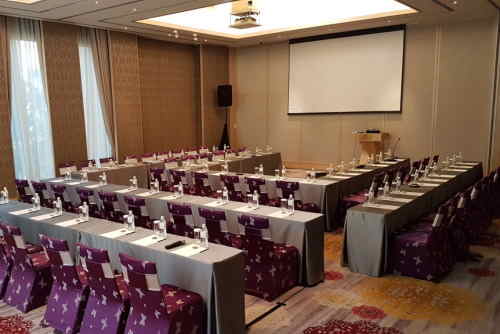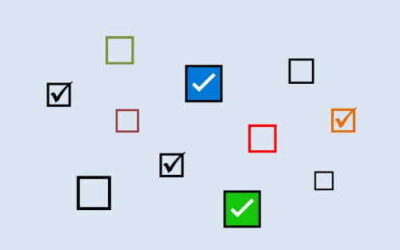Seating Arrangements Matter
The layout of a meeting room determines how participants interact and how they understand the role of the person chairing the meeting.
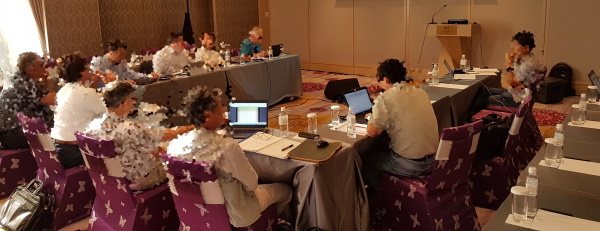
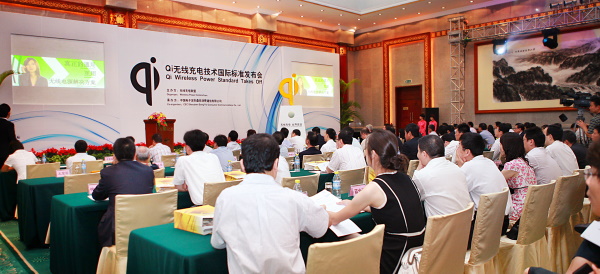
- More interaction and discussion between participants when they can look each other in the face.
- More interaction and discussion when participants are close together.
- Participants are more passive when they are further apart and cannot see each other’s face.
- Chair is on the podium behind a lectern or table: emphasizes the authority of the chair and makes participants more passive.
- Chair is one of the persons around the table: emphasizes that the chair facilitates the meetings and makes the participants more active.
Layout variants for seating 60 participants
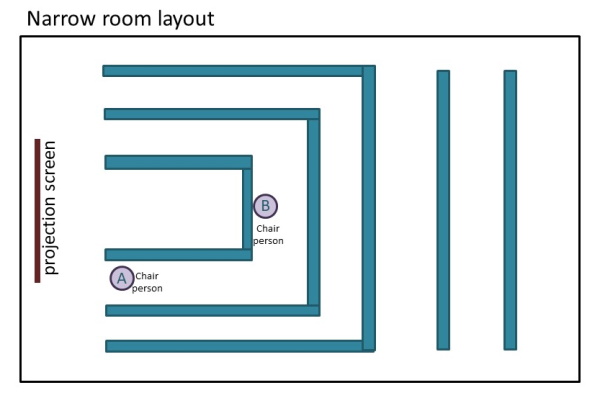
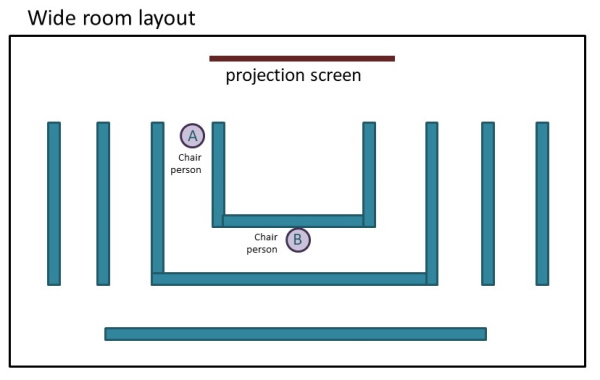
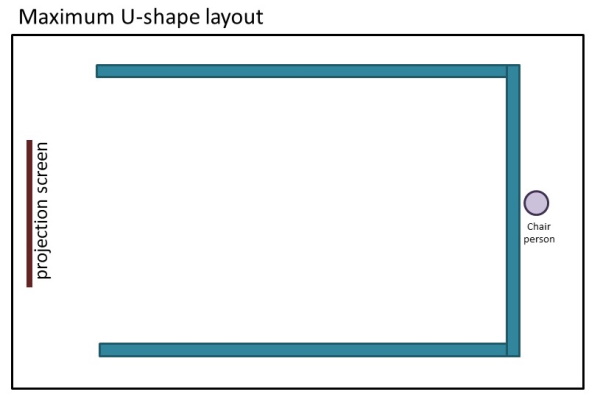
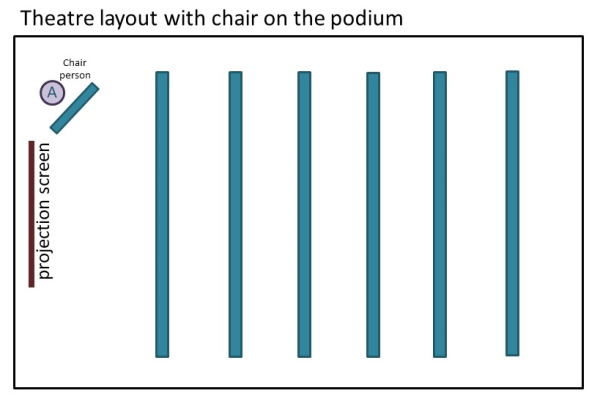
Further reading
The article “Organizing Successful Meetings” covers other aspects of meeting management.
The “Guide to chairing an industry alliance meeting” shows how the chair can make the meeting successful by getting decisions made efficiently. Choosing the right layout, and right seat in the room, is the chair’s responsibility.

